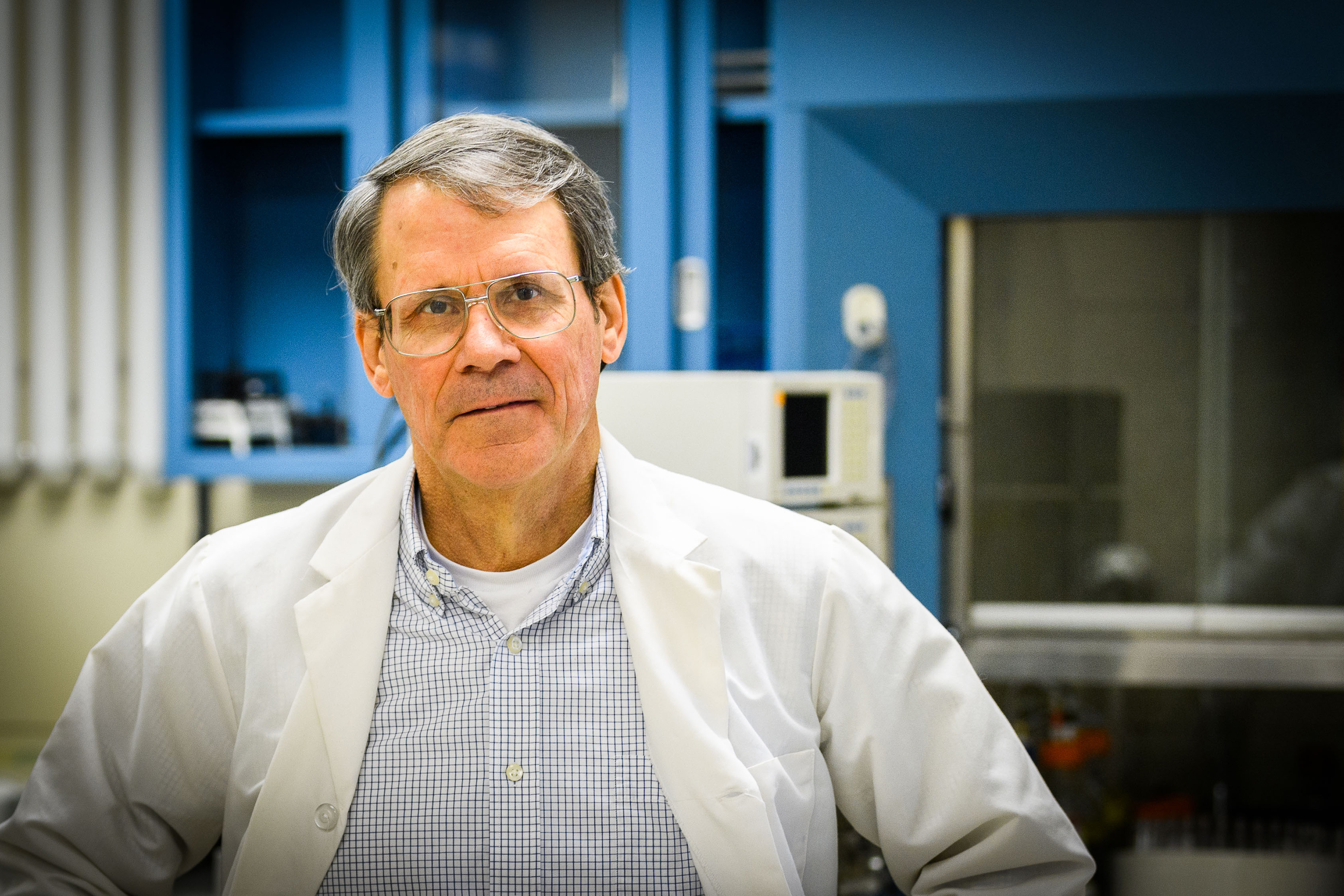There’s a reason dentists tell you to floss every day. Flossing and brushing regularly help clear away plaque and disturb the bacteria on and between our teeth and gums. If these bacteria accumulate it can have serious effects on your health in the form of chronic periodontitis.
Professor of periodontology in UConn’s School of Dental Medicine, Dr. Frank Nichols, has received $1.5 million for a four-year project, sponsored by the National Institute of Dental and Craniofacial Research, to study the role of certain bacterial lipids in promoting bone loss in periodontal disease. UConn Health professor of immunology, Dr. Robert Clark, professor of craniofacial sciences, Dr. Yu-Hsiung Wang, and professor of endodontology, Dr. Qiang Zhu, are co-investigators on this project.
Chronic periodontitis is a destructive gum disease associated with specific microorganisms accumulating in the crevices around the teeth between the gum and tooth root. Over time, the organisms die and become entombed in a mineral matrix called subgingival calculus. Deposited in subgingival calculus and within the overlying microbial plaque are specific microbial factors that can penetrate into the gum tissues.
The body recognizes these factors as a “help” signal and mounts a localized chronic inflammatory response that over time can lead to damage of the gum tissues and bone supporting the teeth. The bacterial factors which are most important to this process are novel bacterial lipids that engage with the immune system.
A hallmark microbial pathogen of periodontitis, called Porphyromonas gingivalis or P. gingivalis for short, is prominent in the subgingival plaque at periodontitis sites. This organism as well as other organisms of the same phylum, produce novel lipids that engage our bodies’ innate immune system.
Previous studies by Nichols and his team found that P. gingivalis produces two unique classes of serine lipids that inhibit bone formation but also activate immune cells called macrophages to release important cytokines. Cytokines signal the rest of the immune system to send help to an area in the body that is battling an infection, in this case the gums and teeth.
They discovered that at least one of these serine lipids mediates its effects by engaging the innate immune system of the host, specifically by interacting with Toll-like Receptor 2 (TLR2). TLR2 is a membrane protein that recognizes foreign substances thereby alerting the immune system to the presence of these substances. In this project, the team is looking to gain a better understanding of how these lipids promote the cellular effects spurred by engaging TLR2.
The team also discovered another class of structurally related lipids in P. gingivalis, called glycine lipids, that also engage TLR2. The glycine lipids appear to be very potent in their capacity to mediate TLR2 effects. P. gingivalis glycine lipids are unique in that they can be produced from the previously mentioned serine lipids that gain entry into gum tissues. Enzymes present in cells of the gum tissues mediate the hydrolytic breakdown of the serine lipids. One enzyme class, called phospholipase A2, is found in elevated levels in gum tissues where chronic periodontitis exists and this enzyme class mediates one step in the hydrolysis of serine lipids to glycine lipids. The hydrolysis of serine lipids to glycine lipids therefore occurs where the host-mediated chronic inflammatory response is most prominent.
This project will quantify the uptake of serine and glycine lipids by the dominant cells in gum tissues. The team will next look at the ability of these lipids produced by P. gingivalis to interact with important immune system receptors like TLR2 in the cells of the gums. The final goal of the project will be to determine the capacity of these bacterial lipids to promote the formation and activation of osteoclasts, the cells that mediate the degradation of bone associated with pathogen accumulation in the gingival crevice.
This project will clarify how P. gingivalis promotes TLR2-dependent bone loss in periodontal diseases. This research could lead to the development of treatments either to prevent the progression of periodontitis or to help to restore gum tissues and bone lost through the progression of gum disease.
Dr. Nichols received his D.D.S. from Ohio State University. He earned his master of dental science degree from the UConn School of Dental Medicine and his Ph.D. in biophysics from the University of Rochester. His clinical research focuses on understanding mechanisms of tissue destruction in periodontal disease and the relationship between periodontal diseases and autoimmune diseases including multiple sclerosis and arthritis.
This project is NIH Grant No.: 1 R01 DE027642-01A1



